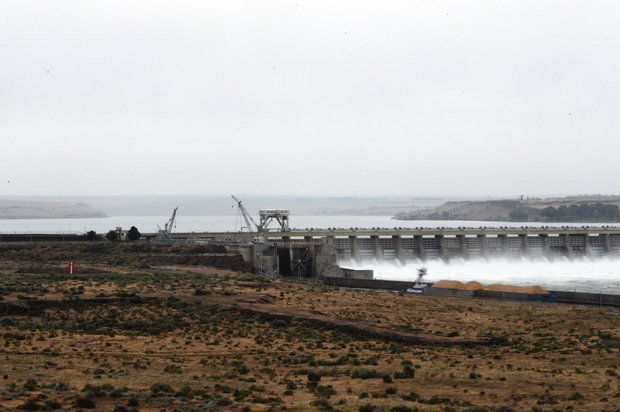forum
library
tutorial
contact

Competitiveness and Cost Control
by Bo Downen, Michael Deen, Megan StratmanPublic Power Council: Testimony on Spill Surcharge, May 11, 2017
|
the film forum library tutorial contact |

|
Competitiveness and Cost Controlby Bo Downen, Michael Deen, Megan StratmanPublic Power Council: Testimony on Spill Surcharge, May 11, 2017 |
BPA rates are currently well above the price of market power. If this trend continues unabated,
there is a serious danger that BPA's financial stability and viability will be threatened...
 Q: Please describe the context in which you are evaluating BPA staff's supplemental proposal for a Spill Surcharge adjustment to rates.
Q: Please describe the context in which you are evaluating BPA staff's supplemental proposal for a Spill Surcharge adjustment to rates.
A: We are evaluating BPA staff's supplemental proposal in the context of BPA's efforts to move the agency's costs and rates towards a more competitive long-term position, the agency's current financial situation, and also the overall level of fish and wildlife costs that impact rates.
Q: Please describe your perspective on BPA's long-term competitiveness situation.
A: As has been discussed both prior to and in this proceeding, BPA's rates are on an unsustainable trajectory. Since FY 2009, BPA rates have gone up approximately 28 percent, well more than twice the rate of inflation during that time. BPA rates are currently well above the price of market power. If this trend continues unabated, there is a serious danger that BPA's financial stability and viability will be threatened, including the ability of the agency to fund initiatives such as fish and wildlife programs.
Q: What immediate pressures are facing BPA rates and costs both currently and in the upcoming rate period?
A: Although BPA's initial proposal was for a relatively modest power rate increase compared to other recent cases, we are concerned about the adverse market conditions and financial pressures facing the agency and what that may portend for rates. In FY 2016, Power Services lost $175 million relative to the BP-16 rate case forecast, driven in large part by weak market prices for secondary energy. In the current fiscal year, in spite of what is likely to be a high water year and also significant cost control efforts, Power Services is still forecasted to lose an additional $29 million relative to the rate case forecast.
Q: What does this financial and market situation potentially mean for rates in the BP-18 rate period?
A: BPA's initially proposed rates for BP-18 are already subject to significant upward pressure, through continued erosion in the assumption of net secondary sales revenue and also through a high likelihood of costs through a Cost Recovery Adjustment Clause or other risk mitigation mechanisms.
Q: How does the potential for increased spill during the BP-18 rate period affect the prospects for a sustainable rate increase?
A: The potential for additional spill significantly adds to the potential for increased rates in the upcoming rate period, exacerbating the pressures described previously. This is highly problematic for BPA's power customers who bear the burden of the increase, and also for the efforts to put the agency's power rates on a sustainable trajectory.
Q: What do you conclude from this analysis?
A: There are two significant conclusions. First, BPA staff's proposal to include a "Cost Reduction Component" in the Spill Surcharge is both appropriate and needed. Second, given the pressures facing rates in the upcoming rate period, we urge the Administrator to make every effort to maximize cost reductions to mitigate the impacts of any increased spill. Power customers are committed to working collaboratively with BPA in this process.
Related Pages:
BPA Sets Rates for 2018-19; Includes Surcharge to Recover Costs Associated with Increased Spill by Staff, Columbia Basin Bulletin, 7/28/17
learn more on topics covered in the film
see the video
read the script
learn the songs
discussion forum
